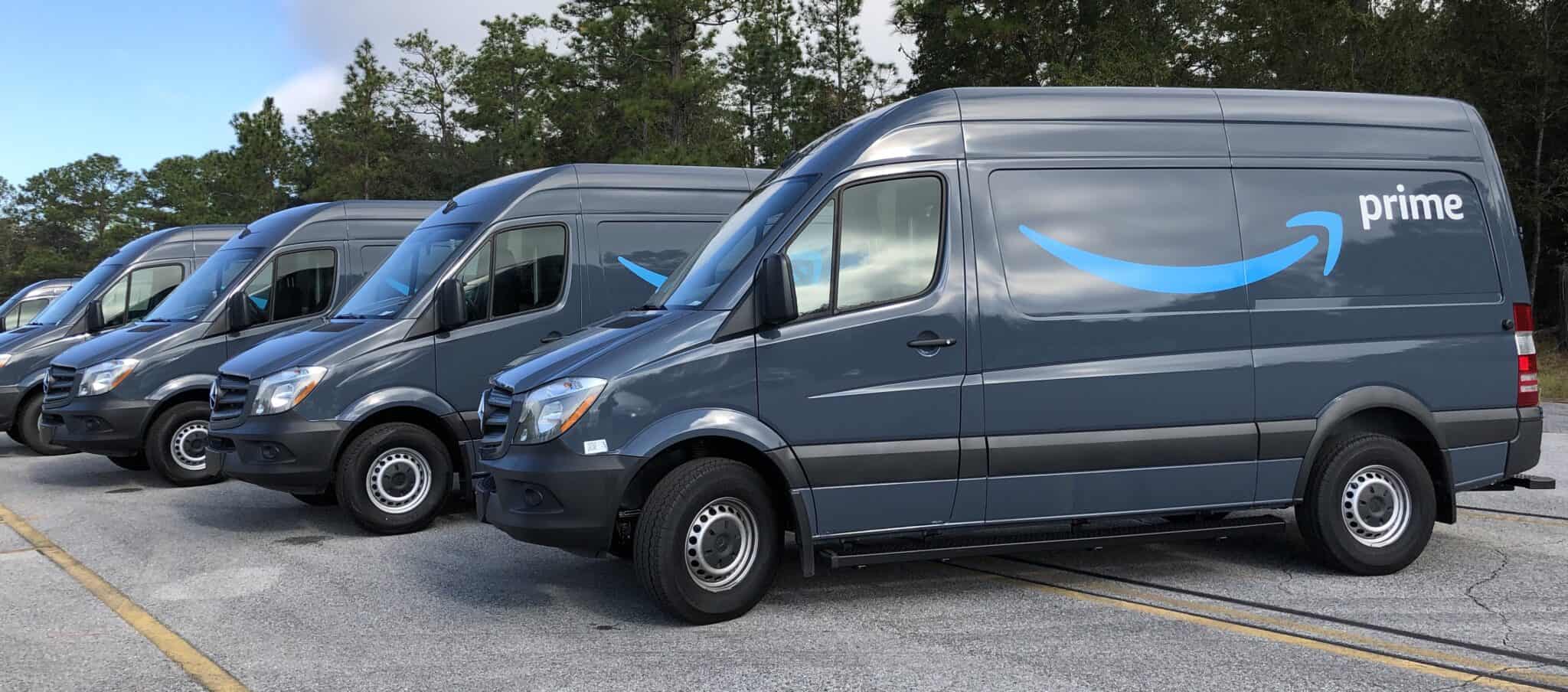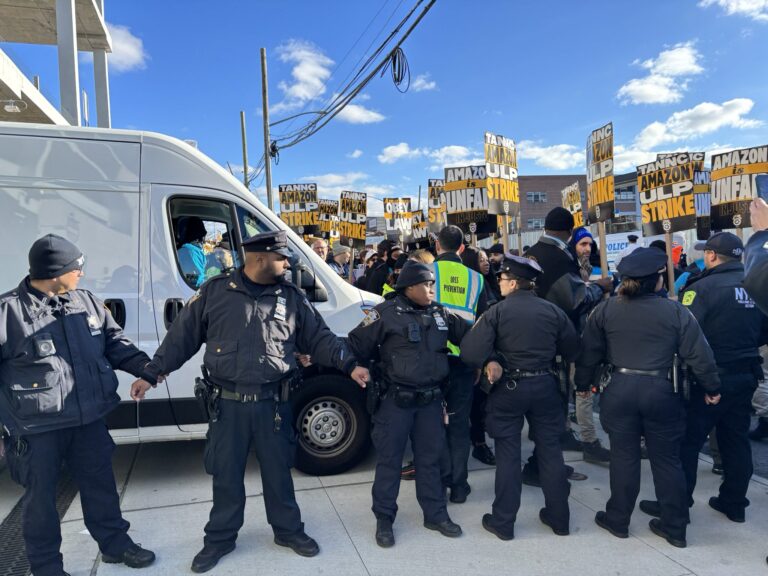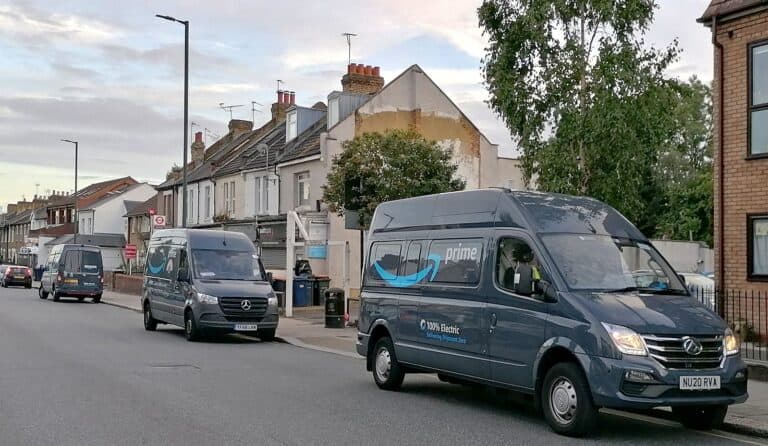Michael Migiel-Schwartz is a student at Harvard Law School and a member of the Labor and Employment Lab.
More than half of nonunion private-sector employees are subject to forced arbitration clauses. These clauses, many of which also include class action waivers, require that employees bring legal complaints through private arbitration—a setting that favors employers. Because the Supreme Court’s Federal Arbitration Act (FAA) jurisprudence has been so unkind to workers—in 2001 determining that only transportation workers are excluded from the FAA’s coverage—even the smallest of judicial victories under the FAA must be cherished. One such victory occurred last month when the Court declined Amazon’s request to review First and Ninth Circuit decisions holding that Amazon’s “last-mile” delivery drivers qualify for the FAA’s exemption of transportation workers.
Both cases (Waithaka v. Amazon.com and Rittmann v. Amazon.com) involve drivers hired to deliver packages from Amazon warehouses to their final destinations (hence, “last-mile”). Alleging that Amazon misclassified them as independent contractors, the drivers sought to bring minimum wage violation claims as a class. Though the employment contracts contained forced arbitration clauses, both Circuits concluded that the drivers qualified for the FAA’s exemption for workers “engaged in… interstate commerce” because the packages they handle cross state lines—even if the workers do not.
Why did the Supreme Court—typically so enamored of forced arbitration clauses—decline Amazon’s petition? A likely possibility is that even the 6-3 conservative Court’s framework for analyzing the transportation worker exemption will protect last-mile delivery drivers, though other gig-economy workers may not be so lucky.
To understand, one must return to the 2019 decision New Prime v. Oliveira. Section 1 of the FAA excludes from its coverage “contracts of employment of… workers engaged in… interstate commerce.” New Prime considered whether the plaintiff’s contract, which identified him as an independent contractor, was a “contract of employment” within the meaning of § 1. The Supreme Court answered in the affirmative, using a “statutory originalist” interpretative method to conclude that the phrase “contracts of employment” (and thus the transportation worker exemption) is not limited to the employer-employee relationship but includes independent contractors as well. Following a canon of statutory construction that courts should construe a statute’s terms as having the same meaning as they did when Congress first enacted the statute, Justice Gorsuch analyzed dictionaries, cases, and statutes from the late 1800s and early 1900s to reach the Court’s holding.
Thus, New Prime was novel not only because it delivered a rare victory for workers under the FAA, but also because of Justice Gorsuch’s interpretative approach. This statutory originalist method—limited as it may be—was unlike the numerous policy-driven FAA decisions in which the Court disregarded the text, original meaning, and legislative history of the statute. This was particularly true of Circuit City v. Adams, the 2001 decision holding that the FAA permitted employers outside transportation industries to use arbitration clauses in employment contracts, despite legislative history and statutory language that pointed to the opposite conclusion. The New Prime Court, in contrast, emphasized that it would not ignore the text of the statute and its original public meaning in the name of pre-conceived policy.
Not all Circuit Courts adhered to Gorsuch’s statutory originalist method as they confronted whether workers whose activities appear intrastate—such as Uber, Grubhub, and Amazon workers—are “engaged in… interstate commerce.” The Fifth Circuit, for instance, held that an airline gate agent did not fall within § 1’s exemption (a questionable decision) without even mentioning New Prime—relying instead on Circuit City and its own precedent. It was the First and Ninth Circuits, rather, that developed the most comprehensive statutory originalist analysis of the question to date.
The First and Ninth Circuits turned to case law construing the Federal Employers’ Liability Act (FELA)—a contemporary statute to the FAA enacted to provide relief to injured railroad workers—to determine what it meant to be “engaged in… interstate commerce” at the time of the FAA’s enactment. Per that case law, the Courts determined that at least two groups of workers had historically been engaged in interstate commerce even where they had not personally crossed state lines: “(1) those who transported goods or passengers that were moving interstate, and (2) those who were not involved in transport themselves but were in positions ‘so closely related’ to interstate transportation ‘as to be practically a part of it.’”
This statutory originalist analysis led the Circuits to determine that the key test for § 1 exemption was whether workers were moving goods or persons that were (for the First Circuit) “within the flow of interstate commerce” or (for the Ninth) “in the stream of interstate commerce.” The goods drivers transport intrastate must be making a continuous interstate journey and not “come to rest.” Because it was clear from the nature of Amazon’s business that the drivers “pick up packages that have been distributed to Amazon warehouses, certainly across state lines, and transport them for the last leg of the shipment to their destination,” they were “engaged in… interstate commerce” and were excluded from the FAA’s coverage.
This test works well for last-mile delivery drivers since their work, as one FELA case puts it, constitutes “a step in the transportation [of goods]… [to] ultimate destinations in another state.” Moreover, because it hews closely to Gorsuch’s statutory originalist method it would seem more likely to stand up to Supreme Court review. But assuming courts continue adhering to this method, other gig-economy workers will likely not benefit.
In Wallace v. Grubhub, for instance, food delivery drivers argued they delivered goods “within the flow of interstate commerce” because the orders consisted of “goods that have travelled interstate.” But this statutory originalist analysis cannot be stretched so far, and the Seventh Circuit compelled arbitration. As the Ninth Circuit conceded in Rittmann, the final delivery of Amazon packages to customers is different from making the final delivery of ingredients that may have traveled interstate, but were materially transformed into a meal at a restaurant. Food delivery drivers transport goods that have “come to rest.”
District courts have come to different conclusions with respect to rideshare employees. However, the Northern District of California was one of the few to conduct a statutory originalist analysis. In Rogers v. Lyft the court reasoned that while “airport shuttle service” workers might be analogous to those engaged in “loading or unloading of an interstate shipment,” Lyft drivers were not. Lyft is more like an intrastate taxi business than such a shuttle service. So even the plaintiffs, who occasionally took passengers to the airport, could not be moving goods or persons “within the flow” or “in the stream” of interstate commerce.
We cannot seek salvation in statutory originalist interpretation, an interpretative mode that may well hurt workers more often than benefit them. We should celebrate that the First and Ninth Circuit decisions survived, but the inroads that practitioners can make using the tools of New Prime are limited. This only further underscores that to undo the Supreme Court’s mangling of the FAA we need legislative action now.










Daily News & Commentary
Start your day with our roundup of the latest labor developments. See all
December 22
Worker-friendly legislation enacted in New York; UW Professor wins free speech case; Trucking company ordered to pay $23 million to Teamsters.
December 21
Argentine unions march against labor law reform; WNBA players vote to authorize a strike; and the NLRB prepares to clear its backlog.
December 19
Labor law professors file an amici curiae and the NLRB regains quorum.
December 18
New Jersey adopts disparate impact rules; Teamsters oppose railroad merger; court pauses more shutdown layoffs.
December 17
The TSA suspends a labor union representing 47,000 officers for a second time; the Trump administration seeks to recruit over 1,000 artificial intelligence experts to the federal workforce; and the New York Times reports on the tumultuous changes that U.S. labor relations has seen over the past year.
December 16
Second Circuit affirms dismissal of former collegiate athletes’ antitrust suit; UPS will invest $120 million in truck-unloading robots; Sharon Block argues there are reasons for optimism about labor’s future.